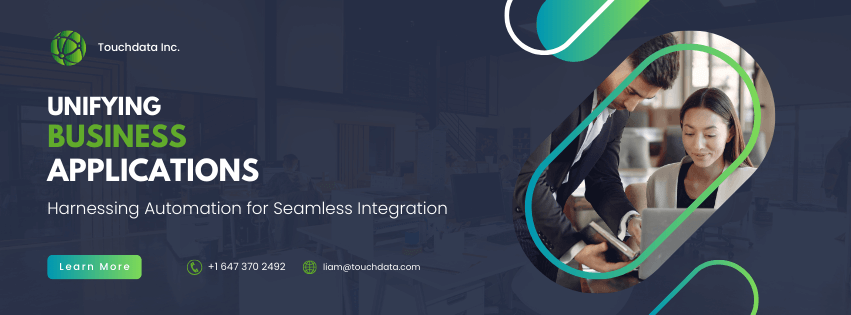TOUCHDATA AI
ELEVATE YOUR BUSINESS SYSTEMS
WITH NEXT-GEN AI AUTOMATIONS
OUr services
BLOG

27 Apr, 2024
Efficiency and productivity are more than just buzzwords; they are the bedrock of successful enterprises. As businesses grow and diversify, they often find themselves juggling multiple applications to manage various aspects of their operations. From email and communication tools to accounting, CRM, and project management software, the digital toolkit of a modern company is both diverse and necessary. However, the lack of communication between these applications can lead to inefficiencies, errors, and lost opportunities. This is where automation steps in as a transformative solution. The Need for Integration Each application in a business’s arsenal serves a specific purpose, but when they operate in silos, the flow of information is hindered. This can lead to repetitive tasks, data discrepancies, and ultimately, a decrease in productivity. For instance, data entered in a CRM system may need to be manually transferred to accounting software, a process that is not only time-consuming but also prone to errors. Automation serves as a bridge between these disparate systems, allowing for seamless data transfer, enhanced accuracy, and more efficient processes. By integrating various applications, businesses can automate routine tasks, such as data entry, billing, and report generation, freeing up employees to focus on more strategic work. Benefits of Automation in Business Applications Increased Productivity Automation dramatically reduces the time spent on manual tasks. By automating repetitive operations, employees can dedicate more time to customer service, strategic planning, and other high-value activities that contribute directly to business growth. Enhanced Accuracy Manual data entry is a major source of errors in business operations. Automation minimizes these errors by ensuring that data flows accurately and consistently across all platforms, from CRM to accounting to sales. This leads to better decision-making based on reliable data. Improved Communication When business applications are integrated and automated, communication improves across the board. Information becomes readily available to all stakeholders, ensuring that everyone is on the same page. This not only improves internal communication but also enhances how a company interacts with its customers. Scalability Automation makes it easier for businesses to scale operations. Automated workflows can be adjusted and expanded without the need to increase staffing proportionally. This scalability is crucial for growing businesses that need to increase their capabilities without significant delays or a steep rise in costs. Cost Efficiency By reducing the need for manual labor and minimizing errors, automation lowers operational costs. It also provides better control over financial processes, such as budgeting and invoicing, leading to improved financial health and reduced waste. Implementing Automation To successfully implement automation, companies should start with a clear understanding of their processes and identify areas where automation can have the most significant impact. Choosing the right tools that can integrate smoothly with existing systems is crucial. Many businesses benefit from consulting with IT specialists or using platforms designed to create custom automation workflows that suit their specific needs. As business landscapes become more complex, the integration and automation of business applications are not just advantageous but essential. They offer a robust solution to enhance productivity, reduce costs, and improve overall business performance. By embracing automation, companies can not only keep up with the competition but also set the stage for innovation and growth. Embracing automation in business processes is a strategic move that can lead to significant improvements in productivity and profitability. As we move forward, automation will continue to play a pivotal role in shaping efficient, responsive, and successful businesses.

30 Mar, 2024
In the burgeoning field of artificial intelligence (AI), Microsoft and OpenAI's collaboration stands as a testament to the rapid evolution and immense potential of AI technologies. Their partnership has progressed to a new level with Microsoft making a significant investment in OpenAI, a move that is set to reshape the landscape of AI research and application. Microsoft's financial backing, reportedly amounting to a multi-billion dollar investment, marks its third infusion of funds into OpenAI, the creator of ChatGPT. While the exact figure was not disclosed by Microsoft, it's speculated to be around $10 billion. This investment underscores Microsoft's commitment to advancing AI technologies and its belief in OpenAI's potential to lead in this arena. The collaboration between Microsoft and OpenAI isn't new; it began with Microsoft investing $1 billion in OpenAI in 2019. This partnership has been focused on building a supercomputing infrastructure capable of supporting the development and training of advanced AI models. Microsoft's investment has facilitated the creation of a supercomputer that powers ChatGPT, linking tens of thousands of Nvidia’s A100 graphics cards. This setup has not only enabled the creation of ChatGPT but is also designed to support the development of numerous other models in the future. OpenAI's utilization of Microsoft's Azure platform for its supercomputing needs has been a cornerstone of this partnership. Microsoft's recent investment is expected to bolster Azure's AI infrastructure further, allowing for the continued development of sophisticated AI models. This arrangement benefits both parties, as OpenAI gains access to robust computational resources while Microsoft enhances its cloud platform's capabilities in AI, making it an attractive option for developers and organizations looking to leverage AI technologies. This partnership and investment are not merely financial transactions. They represent a shared vision for the future of AI—a future where AI technologies are democratized and made accessible to a wide range of developers and industries. Microsoft Chairman and CEO Satya Nadella has emphasized the goal of advancing AI research responsibly and making AI a new technology platform available to all. Through this collaboration, Microsoft and OpenAI aim to equip developers and organizations with the necessary infrastructure, models, and tools to build and run their applications, thereby unlocking new possibilities across various sectors. As we stand on the brink of a new era in AI, the partnership between Microsoft and OpenAI serves as a beacon, highlighting the transformative potential of AI technologies. The advancements stemming from this collaboration could lead to the development of more intuitive search engines, sophisticated software, and innovative solutions across healthcare, finance, and beyond. This venture not only showcases the financial investment in AI but also the investment in a future where AI plays a central role in solving complex problems and enhancing human capabilities.
Touchdata Inc. is an AI automation agency and Managed Service Provider (MSP).
We bring the power of AI to small and medium-sized businesses with autonomous agent development and workflow automation.
liam@touchdata.com
© 2024
All Rights Reserved | TouchData Inc. Sitemap | Privacy Policy | Website Accessibility



